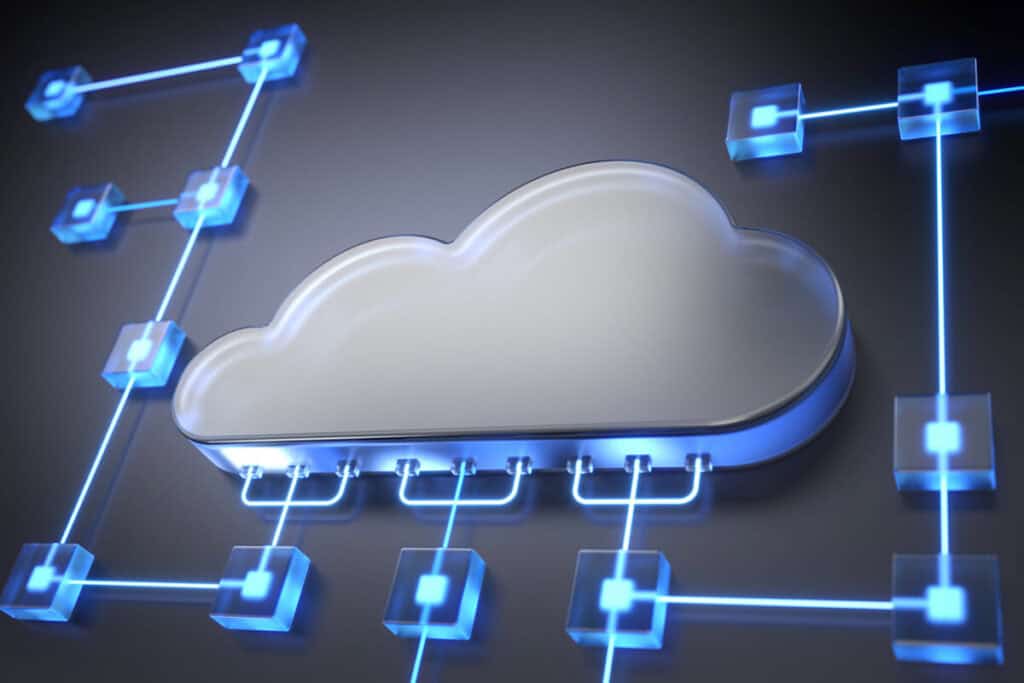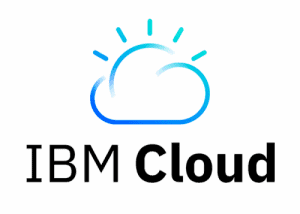What is Cloud Computing
“The cloud” is an idea linked to the concept of distributed computing – a system whereby the hardware, software, and processes making up an IT system may be situated at different locations across the globe, so long as they remain in contact with each other via some sort of communications network.
Table of Contents
ToggleFor cloud-based computing, that network is generally taken as the internet, and a simple cloud computing definition is that cloud computing is the on-demand delivery of computing power, database capabilities, storage, and applications over the internet.
In its current form, the cloud itself is simply a collection of servers and IT resources owned by some of the world’s largest corporations.
So, the elements of cloud computing basics are an IT infrastructure and a wide area network such as the internet, which enables the infrastructure elements to work together, communicate with each other, and serves as the medium for delivering these infrastructure elements to users, on-demand.

Why Is Cloud Computing Used?
Cloud based computing allows for easy access to applications and data from any location worldwide, and from any device with an internet connection.
For businesses, cloud computing offers scalable computing resources and reduced costs, with remote access to work-related data and a platform for deploying software and services.
Cloud computing enables developers to get their applications to market quickly and gives them a convenient and cost-effective development infrastructure.
Cloud computing services generally take one of three major forms: Software as a Service (SaaS), Infrastructure as a Service (IaaS), and Platform as a Service (PaaS).
Software as a Service or SaaS is a cloud-based software distribution model whereby a third-party provider hosts applications and makes them available to subscribers over the internet.
The annual or monthly subscription fee for a SaaS system will typically include applications, software licensing, support, and most other fees.
SaaS eliminates the need for organizations to install and run applications on their own computers or in their own data centers.
This frees them from the expense of acquiring, managing, and maintaining hardware, and does away with the need for individual software licensing, installation, and support.
Infrastructure as a Service or IaaS helps subscribers avoid the cost and complexity of purchasing and managing their own physical servers and IT infrastructure by allocating virtualized computing resources to the user via the internet.
IaaS vendors provide their clients with pay-as-you-go access to storage, networking, servers, and other computing resources in the cloud.
Offerings in an IaaS environment typically include network connections, virtual server space, load balancers, and IP addresses.
An IaaS provider usually also offers a range of services to the consumer for supporting their infrastructure components.
These may include monitoring, detailed billing, security, load balancing, clustering, and storage services like data backup, replication, and recovery.
In the Platform as a Service (PaaS) cloud computing model, providers rent developers everything they need to build an application: development tools, infrastructure, and operating systems.
An internet connection is all that’s physically required to access PaaS, making it possible for developers to build an entire application in a web browser.
Since the development environment isn’t hosted locally, developers can work on an application from anywhere in the world, which enables remote working and collaboration.
The History of Cloud Computing
Cloud computing history can trace its origins back to the 1950s when organizations with sufficient financial resources began using an increasingly complex and ever-changing system of mainframe computers to process their data.
In those days, mainframe computers were huge and enormously expensive.
In 1955, John McCarthy, who originally coined the term “artificial intelligence” (AI), developed a theory of sharing computing time between an entire group of users.
McCarthy’s theory of “time-sharing” was a conceptual vehicle for getting the most out of the computing time available – and making computing time available to smaller companies that couldn’t afford to buy their own mainframes.

A significant milestone in the history of cloud computing occurred in the mid-1960s when American computer scientist J.C.R. Licklider came up with the idea for an interconnected system of computers during his tenure as the first director of the Information Processing Techniques Office at the Pentagon’s research unit ARPA (the Advanced Research Projects Agency).
The term “cloud” dates back to the early 1990s, in its form as distributed computing, which was pioneered by Apple spin-off General Magic, but actually has a history in academia stretching back before then.
The term “cloud computing” dates back to 1996, when it was used in a Compaq internal document.
Who Owns the Cloud?
The cloud itself is simply a collection of servers and IT resources owned by some of the world’s largest corporations. These include Microsoft, Amazon, Apple, and Google. As a cloud user, you own the data that you create, but your cloud service provider has ultimate control over it.
Licklider’s vision of an “intergalactic computer network” helped Bob Taylor and Larry Roberts develop ARPANET (Advanced Research Projects Agency Network) in 1969 – the first network that allowed digital resources to be shared among computers that weren’t in the same physical location.
ARPANET is often considered as the forerunner of the internet. And Licklider has a legitimate claim to be the father of cloud computing technology.
Licklider’s ambition to enable everyone on the globe to be interconnected and access programs and data at any site laid the foundation for grid computing, an early forerunner of cloud computing, which linked together geographically dispersed computers to create a loosely coupled network.

IBM released an operating system called the VM (Virtual Machine) operating system in 1972, laying one of the foundation stones of the technology on which the current cloud is built.
During the 1990s, several telecommunications companies offered their own versions of virtualized private networks (the earliest VPNs).
The arrival of Salesforce.com in 1999 introduced the concept of delivering enterprise applications via a simple website. In subsequent years, this paved the way for both specialist and mainstream software companies to start delivering applications over the internet – the Software as a Service (SaaS) cloud computing model.
On August 25, 2006, Amazon Web Services (AWS) launched Elastic Compute Cloud (EC2), enabling people to rent virtual computers and use their own programs and applications online.
2009 saw the SaaS concept taking a leap forward, as Web 2.0 technologies enabled the likes of Google and others to offer browser-based enterprise applications, through services such as Google Apps (the predecessor of today’s G Suite).
Central to how cloud computing works is the idea of a distributed infrastructure of geographically dispersed data centers, resources, and software, tied together via network connectivity.
As more portable applications and data integration platforms enable smoother connectivity, among the top factors fueling cloud computing growth will be its capacity to change the ways in which users view data, the manner in which organizations look at their operations and the various methods that engineers employ in design and building.
Demand for services and innovation within the cloud computing industry will continue to be driven by several factors, including cost efficiency, scalability, agility, and security.
Some organizations have realized a number of benefits from bringing together different cloud providers under a single umbrella, creating a federated cloud.
This can provide the enterprise with a catalog of resources and services, in addition to allowing greater integration between applications and making them more portable.

Why Cloud Computing Is Important?
Why is cloud computing important? Generally speaking, there are several reasons. Access to the cloud enables anyone with an internet connection to benefit from the wealth of data and resources residing online – whether that be for entertainment, healthcare, finance, or government.
Removing barriers to knowledge and giving everyone easy access to information are among the factors explaining why cloud computing is important for business.
Through the cloud, wealth creation is possible in remote locations, while creativity and innovation also receive a boost. Remote work and communications are also facilitated by cloud computing and apply at the level of the individual, the small startup, and the full-blown enterprise.
In addition, cloud computing enables businesses to gain access to the latest technologies and applications without having to spend money on expensive hardware and infrastructure or having to manage and maintain these resources in-house.
The flexibility, scalability, and adaptability of cloud resources also help organizations to remain agile and responsive to market conditions and the needs of their consumers.

Examples of Cloud Computing in the Real World
If an exam question posed the essay topic, “What is cloud computing with example?”, you could find the answer in the many applications of cloud computing in education itself.
Educational institutions are using the cloud to improve communications and increase connectivity between schools and their students.
This occurs via the internet through direct information transfer, and on telecommunications platforms like VoIP (Voice over Internet Protocol) that use the internet as their medium of operations.
Cloud-based management systems assist teachers and administrators in scheduling, lesson planning, and handling the day-to-day affairs of educational establishments.
Electronic learning or eLearning has removed the barriers to learning for people across the globe who are unable to gain admission to physical institutes, or who can’t find a school that caters to their particular needs.
Online learning platforms enable students to conduct their education at their own pace, with interactive elements that foster exploration and collaboration with others.
Facilities such as Massive Open Online Courses (MOOCs) are making degrees and certifications from the world’s top institutions of learning available to a global audience.

Does Amazon Use Cloud Computing?
Yes. The retail giant is itself a customer of Amazon Web Services (AWS), the section of the company that sells cloud computing services to the outside world.
AWS consists of over 100 services, including compute, databases, infrastructure management, application development, and security, which provide a mix of IaaS, PaaS, and SaaS offerings.
We’ve mentioned Voice over Internet Protocol in the context of education, but the technology is the platform for other uses of cloud computing that serve both individual and corporate purposes.
VoIP converts voice signals into digital data streams, allowing the transmission of voice and video over consumer-level applications like Skype.
For business users, integrating VoIP with office data and cloud computing applications powers Unified Communications platforms, which combine telephony with office productivity software.
Web-based email services like Gmail and Yahoo Mail are a cloud computing example that will be familiar to many. Other cloud computing examples from everyday life include online software suites like G Suite and Microsoft Office 365.
The Future of Cloud Computing
The future of cloud computing looks set to witness a proliferation of the platform, as organizations across the globe continue to adopt multi-cloud or hybrid cloud infrastructures.
There are also signs of a rise in the market for Disaster Recovery as a Service (DRaaS), an automated strategy that can significantly reduce recovery times in times of crisis.
Hyperconverged infrastructure (HCI) – an IT framework that integrates the traditional data center elements of compute, storage, and networking into modular units – is increasingly emerging as an alternative to public cloud platforms, enabling organizations to manage more of their IT resources in-house, while reducing the costs associated with traditional data center systems.
The cloud market is also witnessing an increase in the popularity of containers – a technology that enables developers and network administrators to decouple a specific set of software applications from an operating system and have them run within a clean, minimal, and isolated environment of their own.
The Containers as a Service (CaaS) cloud computing service model allows software developers and IT departments to upload, organize, run, scale, manage, and stop containers by using container-based virtualization. And this deployment model is increasing its market share as well.
Other elements of cloud computing technology likely to have a significant impact on the future of this sector include ad hoc cloud and volunteer computing, fog and Mobile Edge Computing (MEC), and “serverless” computing.
In ad hoc and volunteer computing, under-utilized resources such as servers can be harnessed to create an elastic ecosystem in contrast to existing cloud infrastructure that largely relies on data centers, and in which the resources available are known beforehand.
With the increasing connectivity of a large variety of resources to the cloud, ad hoc solutions such as harnessing the spare resources of smartphones may be used in provisioning micro clouds and “cloudlets” that support low latency computing for non-critical applications in public spaces and transportation systems.
Fog computing harnesses the existing compute resources on edge nodes, such as mobile base stations, routers, and switches, or integrates additional computing power to such nodes along the entire data path between user devices and a cloud data center.
This technology approach will become viable if general-purpose computing can be facilitated on existing edge nodes, or if additional infrastructure such as micro clouds or cloudlets are deployed.
Mobile Edge Computing or MEC is a similar approach for mobile cellular networks, which, however, does not harness computing capabilities along the entire path taken by data in the network.
Here, the radio access network may be shared to reduce network congestion. In this manner, the response time for applications such as low latency content delivery, data analytics, and computational off-loading can be reduced.
In so-called “serverless” computing, a server is not rented as a conventional cloud server, and considerations such as the residency of applications on a cloud VM are not taken into account.
Since the infrastructure is abstracted away from the user, properties such as control, cost, and flexibility are instead considered.
With this technology, functions or modules of an application are executed on-demand, without requiring the application to be running all the time. An event may trigger the execution of a function or a number of functions in parallel.
This model is often called Function as a Service (FaaS) or event-based programming.

Benefits of Cloud Computing
What are the advantages of cloud computing? Cost reduction and the ability to rapidly and easily scale deployments are among the benefits of cloud computing that have traditionally fueled its adoption.
Platforms like Software as a Service (SaaS) and Infrastructure as a Service (IaaS) eliminate the need for both individual and corporate users to invest in costly hardware and software, or to have to bother about updating and maintaining these investments.

Is It Safe to Store Photos in the Cloud?
Image data is relatively safe in the cloud, and files are easy to access and maintain.
For photographers, especially, cloud storage is important as localized back-ups of images are never totally safe, even if you have mirrored copies on two separate drives.
The pricing models and configuration options offered by cloud service providers deliver one of the greatest advantages of cloud computing – the ability to inject more resources or functionality on demand (or go the other way, by reducing your consumption), and only having to pay for what you use.
Correctly configured, a cloud computing system can execute all the programs a normal computer could run. And with an internet connection, cloud users can access their applications and data from anywhere, at any time.
Service providers assume the responsibility for maintaining their cloud infrastructure, and for keeping it updated with the latest software and technologies.
This, in addition to the reduction or elimination of management and maintenance overheads, is one of the many business benefits of cloud computing.
Space and logistical considerations are another area in which cloud computing benefits commercial organizations. Servers and digital storage devices take up space, which enterprises have to rent or purchase.
With limited space at their main premises, some companies have to rent physical space at other locations to store servers and databases, because they don’t have it available on site.
Cloud computing gives businesses the option of storing data on someone else’s hardware – and using the space that this saves for other purposes.
For developers or enterprises looking to create their own software applications, the Platform as a Service (PaaS) cloud computing model frees subscribers from the burden of having to build, configure, and provision their own platforms and back end infrastructure.
With these resources already in place, developers can concentrate on writing the software code and testing the application. This enables a quicker time to market.

Is Google Drive a Cloud?
In the sense that its underlying infrastructure consists of a network of remote storage servers, Google Drive is a cloud.
But unlike Google Cloud Storage, Google Drive is used for storing personal files and is free up to 15 GB across all the different personal services offered by Google.
Drive is built into Google’s web-based operating system, Chromium, and has apps for iOS and Android.
PaaS providers typically offer database administration and maintenance services.
They will also usually provide developers with a database management system.
PaaS also allows developers to build, test, debug, deploy, host, and update their applications in the same environment.
This simplifies the application development lifecycle and enables developers to make sure a web application will function properly as hosted before its release.
Benefits aside, the picture isn’t entirely positive. There are pros and cons of cloud computing – and the distributed infrastructure model comes with its own set of risks and disadvantages.
Risks/Disadvantages of Cloud Computing
Billing methods and a lack of transparency on the part of service providers are two of the disadvantages of cloud computing that often vex subscribers.
For example, Infrastructure as a Service (IaaS) customers pay on a per-use basis, typically by the hour, week, or month.
However, the extremely granular nature of IaaS billing can be a problem for some organizations, forcing users to closely monitor their IaaS environments and bills to understand how resources are being used and to avoid being charged for unauthorized services.
There are also cloud computing risks associated with the storage and ownership of data. With Software as a Service (SaaS), customer data may be stored locally, in the cloud, or both locally and in the cloud.
Most vendors still place data in the legal possession of the end-user, but before signing up, it’s advisable to study the service contract to understand exactly how your data will be used.

Can a Cloud Be Hacked?
Yes – if you define hacking as gaining unauthorized access. As demonstrated in the celebrity iCloud breach, poor password security can give cyber criminals access to private data.
However, the biggest cause of concern for cloud storage is lost data, rather than hacking. But when best practices are in place, and when monitoring, patching, and data protection are continuous activities, the cloud is secure.
Performance issues can rank among both the advantages and disadvantages of cloud computing. On the one hand, having access to scalable and potentially limitless cloud resources can solve a load of problems, especially for smaller organizations that don’t have the budget or in-house IT skills available.
However, issues can arise when providers experience service disruptions, change their service offerings, or suffer a security breach.
Data breaches in cloud computing are among the cloud computing security risks that have come into the spotlight in recent years.
High-profile breaches of cloud platforms Evernote, Adobe Creative Cloud, Slack, and the password management service LastPass are some examples of the data storage and transmission risks of cloud computing.
And when a breach occurs, hackers and cybercriminals can potentially gain access to sensitive information, customer data, and intellectual property.
Besides data breaches, what are the security risks of cloud computing? One of the challenges of cloud computing for organizations that need to meet strict industry standards or regulatory compliance rules is the difficulty of maintaining a compliant status – particularly if multiple cloud vendors are involved.
At all times, organizations have to be in a position to know where their data is, who is able to access it, and how it’s being protected.
Though cloud computing security measures have improved greatly in recent times; there’s no guarantee that every provider is using the latest techniques and technologies to safeguard corporate and individual data.
BYOC or Bring Your Own Cloud continues to be one of the major security issues in cloud computing.
In an office setting or with remote working, organizations face a risk from their own workers, who may have multiple cloud accounts and use a variety of tools with the potential to expose the enterprise to various forms of compromise.
Malware infections, the loss or transmission of sensitive data, and deliberate acts of theft or sabotage are just some of the dangers involved.
Other cloud computing security issues involve the customer-facing side of the business, and the corporate reputation.
For example, if employees move restricted data into the cloud without authorization, business contracts may be violated, incurring legal action.
If a data breach occurs, there can be a serious erosion of customer confidence and an explosion of bad publicity, leading to significant losses in revenue and tarnishing the brand image.

How Does Cloud Computing Work?
What is cloud computing in simple terms? How does cloud computing work? Basically, it makes hardware and software resources available to users as managed services delivered via the internet.
Cloud service providers own or lease these resources (depending on the level of demand), which take the form of a connected network of data centers, software, and associated IT infrastructure that’s geographically distributed to ensure maximum coverage and to ensure that each resource has some form of redundancy or duplicate that can be called upon if the primary system fails.
Many private users get their introduction to cloud computing through everyday applications like web-based email services such as Gmail, or streaming media platforms like Netflix.
In all cases, the underlying principle remains the same: access to the service takes place via the internet or some form of network connectivity.
Clients must be connected to the internet in order to use cloud services. And service providers maintain those cloud computing resources on internet servers, rather than distributing copies of data files to individual client devices.
Cloud computing systems are usually designed to closely track all system resources. This enables service providers to charge customers fees proportional to their use of network, storage, processing power, etc.
Alternatively, billing may occur on the basis of a flat-rate subscription, typically charged monthly or yearly.
Types of Cloud Computing
At one level of classification, there are three types of cloud computing: private, public, and hybrid.
Private cloud computing takes place within the confines of a single organization’s network.
Essentially, private clouds are privately owned data centers and network infrastructure, operating within a controlled and secure system.
This approach enables organizations to have immediate visibility into their data and network assets, and to maintain close control and governance over their systems, data, and applications.
Protection of sensitive information and intellectual property are often the main drivers for a private cloud computing deployment – but the organization involved must be willing to pay the price for infrastructure acquisition, operation, management, and maintenance.
In public cloud computing, third-party providers offer infrastructure and services over the public internet, making them available to anyone who wants to use or purchase them.
Platforms such as Amazon Web Services (AWS), Microsoft Azure, and Google Cloud Platform are among the leading providers of public cloud, though they offer other types of service models as well. Cloud computing for small businesses often starts at this level.
As its name suggests, hybrid cloud computing sits in the middle ground between private and public cloud computing.
Here, organizations typically move some of their data assets and applications to a public cloud, harnessing the power and economy of remotely hosted infrastructure, while hosting their most sensitive data and mission-critical applications on a private cloud.
This model is emerging as one of the most widespread approaches to cloud computing in business.
Hybrid cloud and multi-cloud (the use of cloud services from a variety of different vendors or service providers) are among the cloud computing concepts that are currently driving the market.
Cloud computing concepts technology and architecture are finding applications in every sector of the economy, and there are various types of cloud computing services emerging to cater for these needs.

What Are the Types of Cloud Computing?
Cloud computing is usually categorized in terms of three service models: Software as a Service (SaaS), Infrastructure as a Service (IaaS), and Platform as a Service (PaaS).
These services build on one another to form what’s known as the cloud computing stack. More recently, this stack has been expanded to include Functions as a Service or FaaS.
One area that benefits from cloud computing – gaming – boasts a worldwide user base of around 2.5 billion, which is a third of the global population.
Heightened security, increased compatibility, higher availability, and easier access are some of the reasons why the cloud has been boosting the cloud computing gaming industry.
Cloud integration with gaming has improved network performance, facilitated the entry of new players in the market, increased the adoption of next-generation technology in cloud gaming, and given gaming platforms access to a huge customer base via social media and mobile games.
Cloud computing removes the limitations of low memory storage, graphical capability, and processing power that often plague gamers on their own machines.
Like any other cloud subscriber, gaming companies can scale the resources they lease-up or down depending on their needs.
Cloud gaming also supports a wider range of devices, including laptops, tablets, and smartphones.
Games, online commerce, and numerous other operations have led to the proliferation of big data – huge volumes of structured, semi-structured, or unstructured information that can be so extensive that they cannot be processed through traditional database and software techniques.
Through hardware virtualization, cloud computing for big data analytics allows for the storing and processing of significant amounts of data, which remains readily available, scalable, and fault-tolerant.
Cloud platforms can dynamically expand to provide storage for increasing volumes of data.
Cloud computing also provides options for automating the various components of the analytics process, thereby reducing complexity and enhancing the productivity of big data analysis.
And by hosting the latest big data storage, processing, and analytics tools on cloud infrastructure, these resources become available to small, medium, and large-scale enterprises.
Increased flexibility, better communication, easier access to information, and the ability to deliver their services in ways that were previously impossible through the use of traditional offline software are some of the benefits of cloud computing for charities and non-profit organizations.
Cloud computing also drastically reduces the amount of resources that charities need to dedicate to their IT infrastructure. This frees up time and money so that charitable organizations can concentrate on their missions.
Practice management software delivered via SaaS allowing firms to focus on the task of practicing law while the Software as a Service provider operates, updates, and maintains their IT infrastructure, which is one of the advantages of cloud computing for lawyers.
This leads to lower costs due to reduced overhead, less hassle in maintaining and upgrading the case management system, and greater flexibility for legal practitioners since their web-based system can be accessed from anywhere with an internet connection.
And as long as lawyers take reasonable precautions to ensure that confidentiality is maintained, cloud-based data storage systems can be used to store and back up confidential client information.
Cloud computing for real estate organizations enables agents and companies to efficiently store thousands of files, including photos, documents, and other business content.
Real estate agents can also cut costs by using cloud computing technology rather than their own IT infrastructure and enjoy increased efficiency in their business transactions.
Cloud-based platforms provide the data mining, sharing, and collaboration tools needed to facilitate quicker access to information for both agents and clients.
Companies that Offer Cloud Computing
There are many cloud computing companies battling for a share of the market, particularly as the shift to remote work and videoconferencing are accelerating the adoption of cloud.

Amazon Web Services or AWS cloud computing was the first of the major commercial cloud computing service providers, arriving on the scene in 2008 with an Infrastructure as a Service (IaaS) offering that’s still the market leader.
Amazon Elastic Compute Cloud (AWS EC2) provides a scalable infrastructure for companies that want to host cloud-based applications.
EC2 users only pay for the usage of Amazon’s virtual servers, saving them the cost (and associated maintenance) of investing in physical hardware.
The Amazon cloud computing platform has since become a major player in artificial intelligence (AI), database, machine learning, and serverless deployments.

Currently second to AWS in cloud computing market share is the Microsoft cloud computing platform, Azure.
Now entering its second decade as a public cloud vendor, Azure cloud computing is a known commodity for enterprise users – particularly those adopting a multi-cloud strategy. It can plug into Salesforce, SAP, Oracle, and Adobe.
Microsoft has also formed deep partnerships with server vendors to create integrated stacks that target the hybrid cloud and private cloud markets.
Azure Arc, Azure Stack, and Azure Stack Edge are all examples of these hybrid efforts. And Azure offers deep integration with Microsoft 365, the cloud and enterprise software suite, which is packaged for various industries.

The Google cloud computing service is one of the leading cloud computing providers. Google Cloud Platform has been building partnerships with key enterprise players such as Salesforce, Informatica, VMware, and SAP.
The company is also combining its G Suite and Google Cloud sales efforts and is giving AWS and Microsoft Azure a real run for their money.
Its key verticals include areas such as retail and financial services, but Google Cloud is also seeing gains from setting up a strategy to manage multi-cloud workloads.
The COVID-19 crisis has given the company a boost – particularly with Google Meet, which has become a hit with remote workers.

IBM cloud computing has set its sights on becoming the binding medium holding together multi-cloud deployments, which feature a blend of private and public clouds, as well as privately owned data centers.
To this end, the company spent $34 billion to acquire the Red Hat Linux platform and open-source pioneer and launched Watson AIOps, a series of automation tools for IT operations, 5G, and edge offerings, and Cloud Paks – a set of pre-integrated applications optimized for Red Hat OpenShift.
The company is looking to align its portfolio around hybrid cloud and AI to meet the evolving needs of the market.
Other major players in the cloud computing market include China’s Alibaba Cloud, Cisco Systems, and Hewlett Packard Enterprise (HPE).
One area of innovation where IBM and others in the cloud computing sector are fostering innovation is in the development of a quantum computer cloud.
Though still in the early stages of development, quantum computers use quantum bits (or “Qbits), which can be zeros, ones, or any combination of both, making for much faster processing speeds.
This facilitates the modeling of very complex scenarios and gives quantum computing the potential to spur the development of new breakthroughs in science, new machine learning methods, and more efficient algorithms.
IBMQuantum (IBM), Microsoft (MSFT) and Amazon (AMZN) are working to provide broader access to the technology by implementing quantum computing as a service in the cloud.
In November 2019, Microsoft announced that it would start providing access to quantum computers in its Azure cloud for select customers.
IBM has been offering quantum computing access in its cloud since 2016 and recently announced that 100 companies, including Delta Air Lines (DAL), Goldman Sachs (FADXX) and Daimler (DDAIF), now use it to experiment with quantum computing.





